Swifty on achieving your graphic design potential
From typography to TV titles, magazines to music artwork, Swifty is a towering figure in British graphic design. We discover the secrets of his success.

When celebrated British designer Ian Swift, aka Swifty, takes his first look at the Creative Bloq homepage, he's not exactly bowled over. "This isn't really the kind of thing that I'm about," he says, shaking his head. "I'm not sure how I'm going to fit in here."
It may surprise you to hear me, the associate editor, say this... but he has a point. Because while Creative Bloq is largely about quick, easily digestible tips and short, colourful bursts of inspiration, that alone is never going to be enough to become a truly great designer.
To do so requires years of hard graft, discipline and serious study. And that's exactly what's made Swifty the legend he is today - celebrated within the design and music industries for his typography, magazine designs, flyers, record sleeves, and TV title sequences. So anyone who wants something similar from his or her design career would do well to follow his story…

Early days
Chatting to us at the recent Adobe Creative Day event, where he also took part in an on-stage debate, Swifty explains that didn't always want to be a designer. "I stumbled into it," he admits. "I'm not one of those people who's tried to direct my life." Instead he was planning to follow his father's footsteps into the army, until his sister suggested art college. He did two years on a foundation course in Warrington, then went on to Manchester Polytechnic, getting a thorough grounding, both theoretical and practical, in the fundamentals of graphic design.
When at Manchester, he got a lucky break. "One of the tutors there knew Neville Brody [of iconic '80s magazine The Face]," he explains, "and he came up to lecture." Swifty ended up meeting him and - despite having originally wanted to be a painter - got a job with him as a magazine designer in 1986.
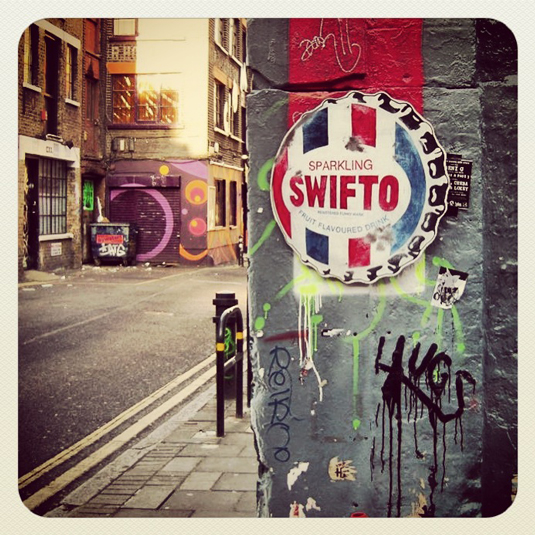
To those who weren't around in Britain during the mid-1980s, it's hard to explain the impact The Face made on both the music and design scenes of the times. Known as the 'style Bible', the monthly magazine helped bring elite metropolitan movements like the New Romantics into the mainstream, and it injected a sense of vibrancy and visual innovation into printed media that still resonates with today's generation of art editors.
For Swifty, now 21, it was clearly a case of being in the right place at the right time. "Throughout my career I've been fortunate to get involved with interesting people doing interesting things," he admits. But he also made the most of the role, avidly learning everything he could from Brody - the magazine's typographer, graphic designer, and art director - and even helping him draw up some of his famous fonts. From there, a mixture of luck, talent and hard work led to a successful career in magazines, until he left to pursue his own freelance career.
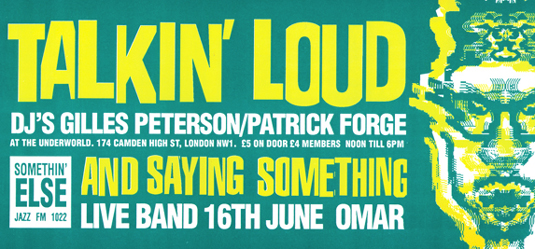
Thanks in part to The Face connection, a steady stream of work came his way. "I managed to make a name for myself doing things like flyers and record sleeves," he explains. "You know, you're in a club, someone says 'That's a cool flyer', then they get you to do one for them, and it goes on." By May 1990 he had founded his own studio, Swifty Typografix.
For a time, he began to employ other designers but he soon realised that being a boss wasn't the right fit for his personality. Known for his independent spirit, Swifty has worked alone ever since. "I do collaborate with other designers," he explains, "but I keep creative control of every project."

Along the way he's built up a CV that should act as an inspirational beacon for almost every designer. He's created classic record covers for the likes of Talkin' Loud and Mo' Wax. He set up the UK's first independent font foundry, Typomatic. His art direction won best use of a single medium at the Media Week awards in 1996 for the Fosters Ice Street Art campaign. He's designed title sequences for British TV shows like Derren Brown, Smack the Pony, and Peep Show.
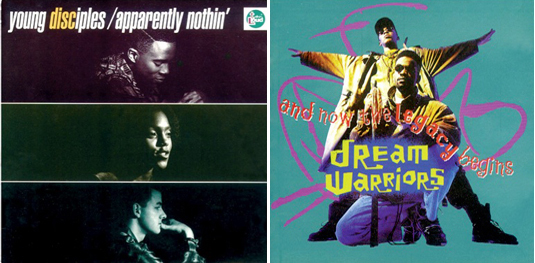
But Swifty is perhaps most well-known for his role as designer on Straight No Chaser, a groundbreaking magazine set up by Paul Bradshaw to cover the black music scene in Britain during the late 1980s and 1990s.
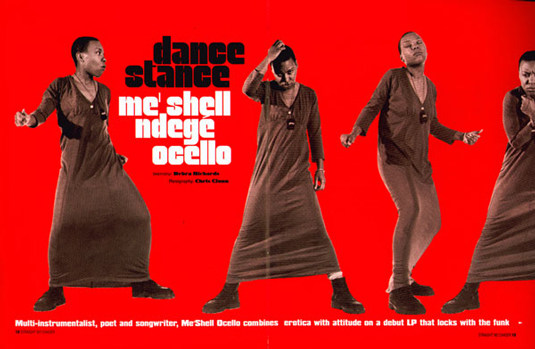
"Straight No Chaser never made any money," Swifty recalls. "But it was incredibly influential. If you go onto eBay now and try to find a copy you won't. That's because people who bought a copy at the time, they've still got it on their shelf, they don't want to part with it. People relish these things."
Like The Face before it, Straight No Chaser's impact - both in terms of the music world and the design community - went beyond its immediate readership. Though it closed in 2007, its influence still reverberates to this day (and its spirit lives on in part through Stereophonic Supply, a new blog from the SNC team).

"Straight No Chaser wasn't a brand, it was a kind of philosophy," Swifty explains. "It's about being deep-rooted in culture. And I think it's only just coming to the fore now exactly how much of an impact black music has had in this country."
Design philosophy
The word 'deep-rooted' is apposite here, and it's also a good way to describe Swifty's general approach to design - which infuses both his client work and his own artwork, as well as his skateboard and T-shirt brands. It's a philosophy in part borne from a deep understanding of the discipline of graphic design, and in part from a deep appreciation for the subject matter, whatever that may be.

"I think it's this history of music, culture, fashion, that we have in this country that's what makes me tick and give me a buzz," he explains. "And that's what makes my work different from other graphic designers."
Technology-wise, he's never been a Luddite: "I use Photoshop, I use Adobe software, I've been using Apple Macs since my days at The Face," he explains. He even accepts that "print is kind of dead really; the ebook is going to take over". He's got his head in this space right now, doing some hush-hush work on digitising the archives of a very famous magazine, and reckons that "curation is what will be important in future".
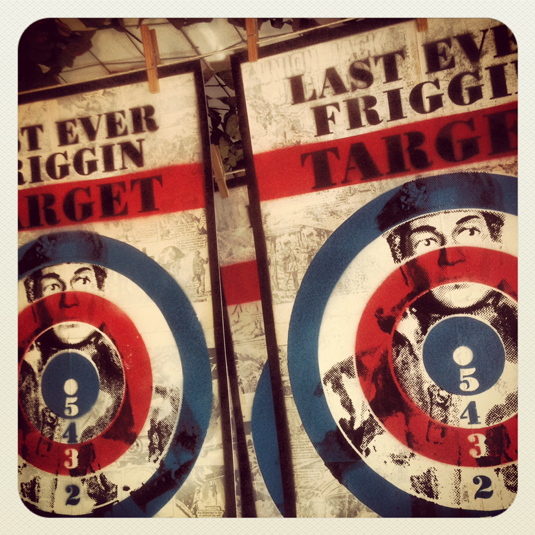
But at the same time as being on the cutting edge, Swifty has a deep affinity with the traditional techniques of graphic design, and is loathe to see the industry become overly automated and sanitised. "I did learn the traditional print techniques - B.C., before computing," he stresses. "And to a large extent I'm still wedded to the old ways of doing things: you know, overlays, writing specifications for printers.
"There's no room for error nowadays. It used to be bloody annoying when you got a job back and everything was wrong. But in a funny kind of way that's what made it kind of nice.
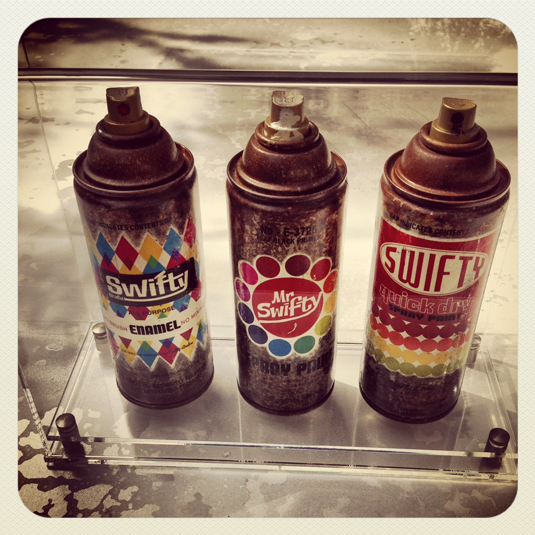
"That's what I try to do now, to try and inject some randomness into everything I do. It's got to look like someone created it."
It's this fusion between the old and the new, the traditional and the innovative, that's at the heart of Swifty's appeal - and one that graphic designers everywhere would do well to emulate. It's not by any means an easy task to pull off. But succeed and the world may very well become your oyster…
Words: Tom May
Not sure whether to sign up to Adobe's new Creative Cloud service? Read this interview with Adobe's Mala Sharma to find out more...

Thank you for reading 5 articles this month* Join now for unlimited access
Enjoy your first month for just £1 / $1 / €1
*Read 5 free articles per month without a subscription

Join now for unlimited access
Try first month for just £1 / $1 / €1
Get the Creative Bloq Newsletter
Daily design news, reviews, how-tos and more, as picked by the editors.

The Creative Bloq team is made up of a group of design fans, and has changed and evolved since Creative Bloq began back in 2012. The current website team consists of eight full-time members of staff: Editor Georgia Coggan, Deputy Editor Rosie Hilder, Ecommerce Editor Beren Neale, Senior News Editor Daniel Piper, Editor, Digital Art and 3D Ian Dean, Tech Reviews Editor Erlingur Einarsson, Ecommerce Writer Beth Nicholls and Staff Writer Natalie Fear, as well as a roster of freelancers from around the world. The ImagineFX magazine team also pitch in, ensuring that content from leading digital art publication ImagineFX is represented on Creative Bloq.
